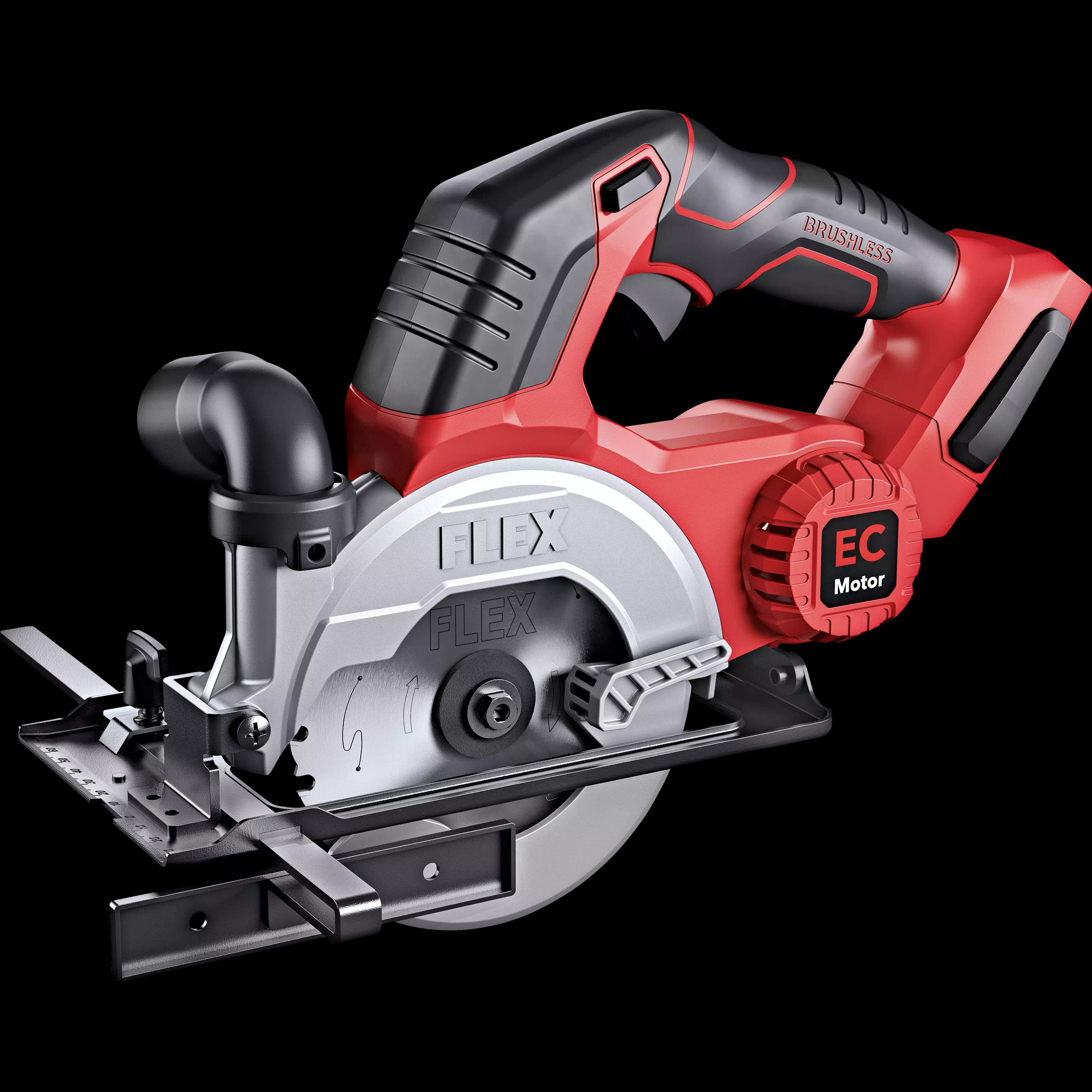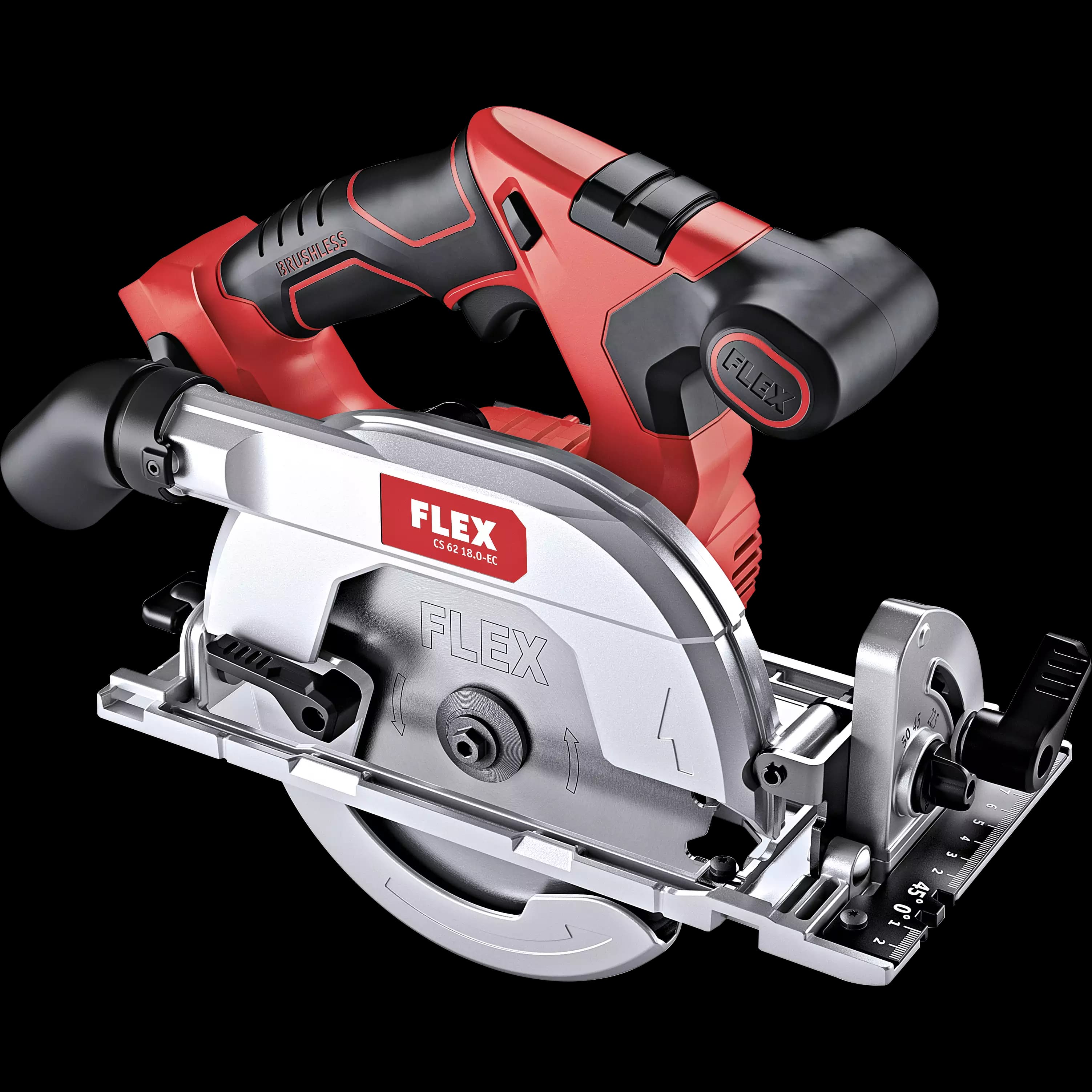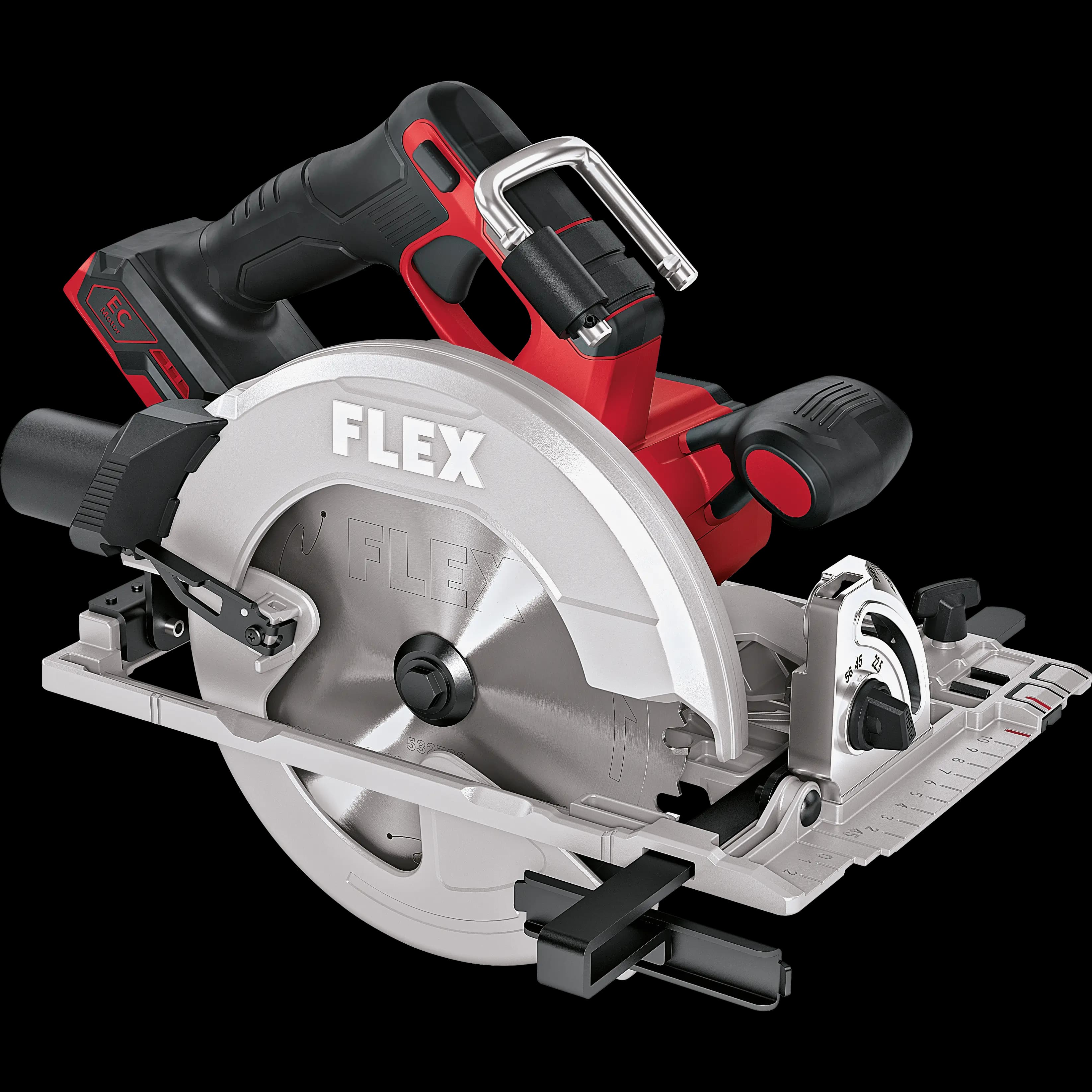Circular saw
The circular saw, or more precisely the compact circular saw, the cordless circular saw, the metal-cutting compact circular saw, the diamond masonry saw (wet), the benchtop circular saw and the cross-cut and mitre saw, all belong to the saws product family. Like all saws, the circular saw is a tool for cutting materials. Its functions make it the most important tool used in woodworking. Circular saws are used by both professionals and DIY enthusiasts and are manually operated.
As its name suggests, the circular saw has a round circular saw blade with which the cuts can be made. The saw blade for example is a steel disc with sharp cutting teeth.
The circular saw is a motorised unit with a gearbox that causes a saw blade to rotate. Besides the saw blade, the main components of the circular saw include the motor, one or more handles, a protective cover, a carriage and, in the case of a corded machine, the cord. Circular saws have a very wide range of possible uses.
Functions of a circular saw
The circular saw or cordless circular saw should be your product of choice when you need to make fast and, above all, precise and straight cuts into or through materials. The design of a compact circular saw allows particularly long cuts to be made, and a precise cut can be made even in thick materials. In addition, circular saws can be operated at different speeds and thus with different cutting speeds and thicknesses. The speed of rotation and thus the cutting speed should always be suitable for the material being cut.
In order to make a precise cut, make sure that the circular saw reaches its maximum speed. To do this, the machine can be briefly allowed to run up to speed. This ensures that the saw blade makes contact with the workpiece at the right speed and delivers an ideal result. The correct saw blade must also be selected, and it must be possible to set the desired cutting depth and angle of incline. Being able to set the desired cutting depth enables the material to be worked on without being completely sawn up. The correctly set cutting depth also prevents the saw blade from exiting the material unnecessarily deep. Besides the possibility of adjusting the cutting depth, the option for the angle of inclination is also important, especially for mitre cuts.
Different types of circular saws
A choice of various circular saw models is available. Both corded and cordless compact circular saws are available. A special type of compact circular saw is also available in the shape of the plunge saw. Special metal-cutting compact circular saws are even available for working on metal, and special diamond masonry saws for wet and dry cutting are available for working on stone.
Compact circular saws
A compact circular saw is also available. On these machines, the circular saw blade is positioned in front of the material being cut and is guided over the workpiece by the user's hands on the saw blade's upper guard. The plunge saw's blade is in a housing. This saw can be positioned on the workpiece as desired, and the saw blade must first be pressed down or plunged into the workpiece. This allows sawing at any point on the workpiece and offers the option of joint milling. Compact circular saws offer maximum flexibility thanks to their size and low weight, and they can be used portably.
Benchtop circular saws
Benchtop circular saws on the other hand offer better performance, there are hardly any restrictions to either the cutting depth or the cutting width, and workpieces can be cut faster thanks to the saw's size. However, the benchtop circular saw can only be used as a stationary unit.
Metal-cutting compact circular saws
Metal-cutting compact circular saws boast special properties that prevent the cutting point on the workpiece from overheating. Since metal is much harder than other materials, a lot of heat is usually generated at the cutting point. To compensate for this and avoid damage to the workpiece and the circular saw blade, the motor runs at a lower speed.
Diamond compact circular saws
Precise cuts in natural and artificial stone can be made with diamond compact circular saws. However, a diamond compact circular saw isn't just capable of making a clean and precise cut, it can also perform a mitre cut. To compensate for the heat generated during sawing, diamond compact circular saws have a water supply to effectively cool the diamond tool.
Different saw blades for a circular saw
A circular saw's interchangeable saw blades enable it to be used for cutting different materials. Different saw blades can be used on a circular saw depending on the material, for example in terms of the blade's diameter and the number of teeth. Due to the hardness of the material for example, a saw blade with a larger number of cutting teeth is needed to cut metal than to cut wood. A special diamond-segmented blade is required to cut stone.
The more teeth that a circular saw blade has, the more precise and clean the cutting result will be. A saw blade with few teeth is particularly suitable for a longitudinal cut. On the other hand, a saw blade with finer teeth is used to make a cross-cut.
Each compact circular saw has a maximum saw blade diameter that can be used. A larger saw blade results in deeper penetration into the the material.
Cutting different materials with a circular saw
Even though the circular saw is considered the most important tool for sawing wood, a number of other materials can be worked on with the different saw blades.
A circular saw or a cordless circular saw can be used for shredding worktops, laminate, firewood, gypsum concrete fibreboard, derived timber products such as chipboard or OSB board or metal, plastics and tiles. A circular saw can also be used to cut hard wood or wooden beams.
In addition to the different saw blades required, the power of the motor and the speed must also be appropriate for the work being done. High power and wattage are generally recommended, especially when working on hard materials. When setting the speed, bear in mind that a circular saw can generate high temperatures and must therefore be adjusted precisely, especially for heat-sensitive materials.
Possible uses for a circular saw
A circular saw can be used for all work around the house. For example, for the work on the roof truss. The wood used there must be brought to the right length with precise cuts. The cordless circular saw is advantageous here, as it allows you to work flexibly on the roof and to cut the wood to the final length directly on site.
A circular saw can also be used to make wood panelling. This requires wooden boards and beams to be cut to the right length. This can be done with both corded and battery-powered circular saws. A circular saw can also be used to make various types of wooden furniture. Large wooden panels can also be cut with a circular saw, as can any other wooden elements in a carpenter's workshop.
Guide rails an other accessories
It is recommended to use a guide rail when particularly long, straight cuts need to be made. This is also suitable if the line being followed is difficult to see on the workpiece. A circular saw can often be purchased in a set together with a guide rail.
A vacuum cleaner attachment is also a useful accessory. When working on wood in particular, material removal causes sawdust that can be eliminated directly with the aid of an extraction unit, thus guaranteeing a better view.
Safety
Since working with saws always involves a certain risk, when buying a circular saw make sure that it has the most important safety features. The most important feature on a circular saw is the protective cover. This covers the circular saw blades as long as the circular saw has not penetrated the workpiece. Since circular saw blades continue to rotate for some time after sawing has finished, increased protection against injuries from the circular saw blades is ensured even after sawing has been completed.
A second handle is another safety feature. This ensures better handling of the compact circular saw and reduces the risk of cutting your hand. More force can also be applied with two hands.


